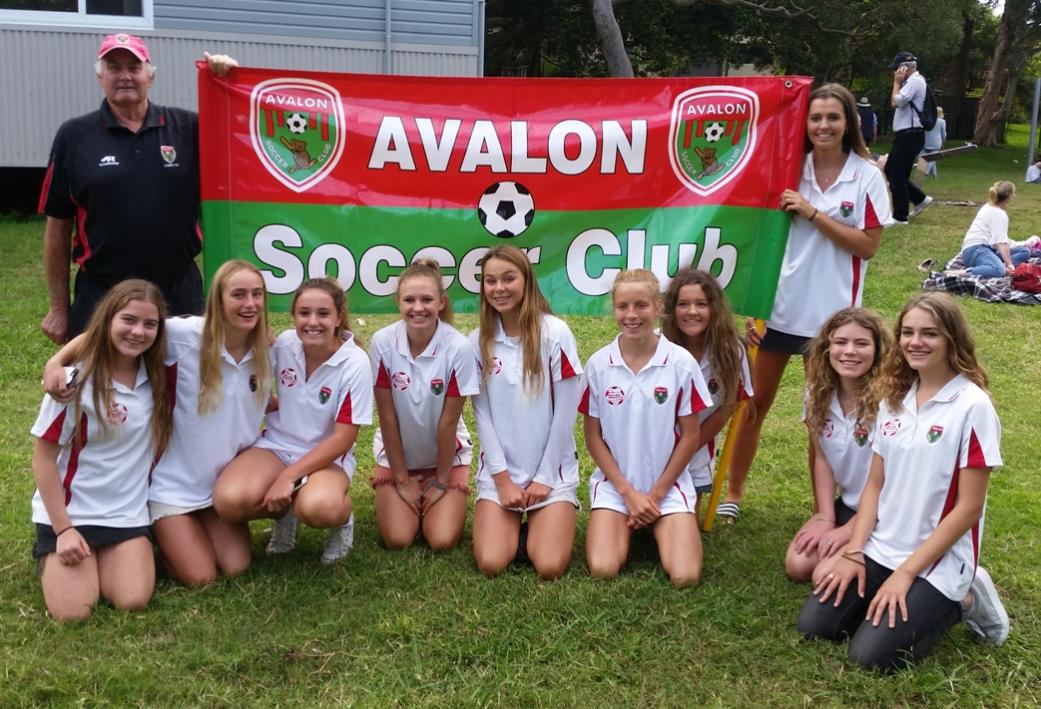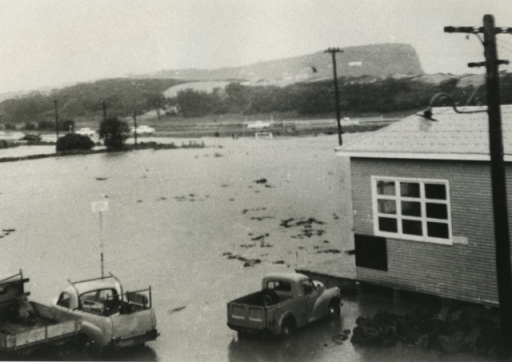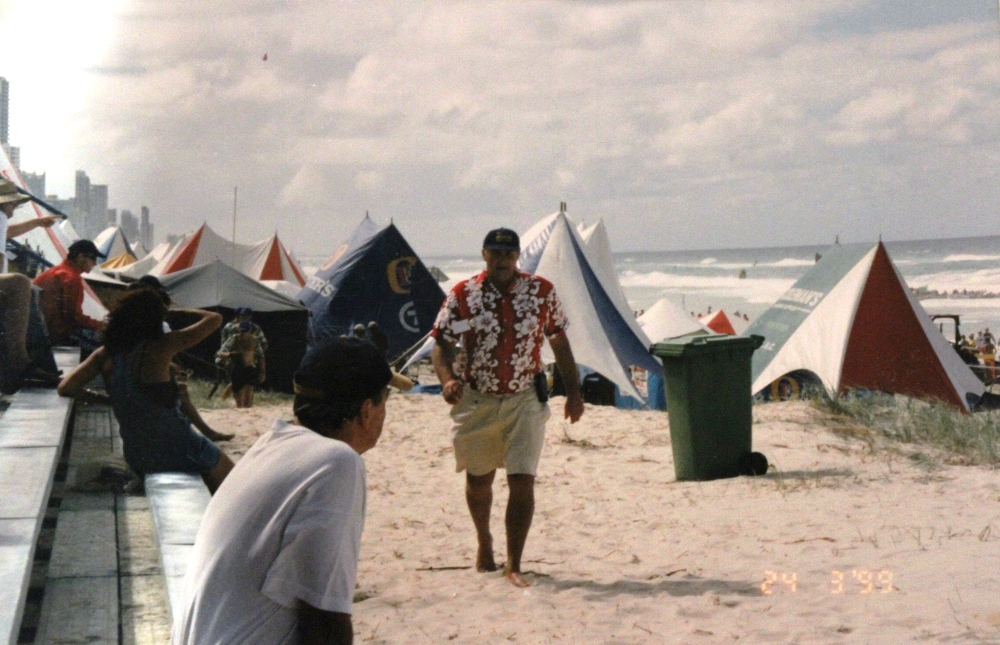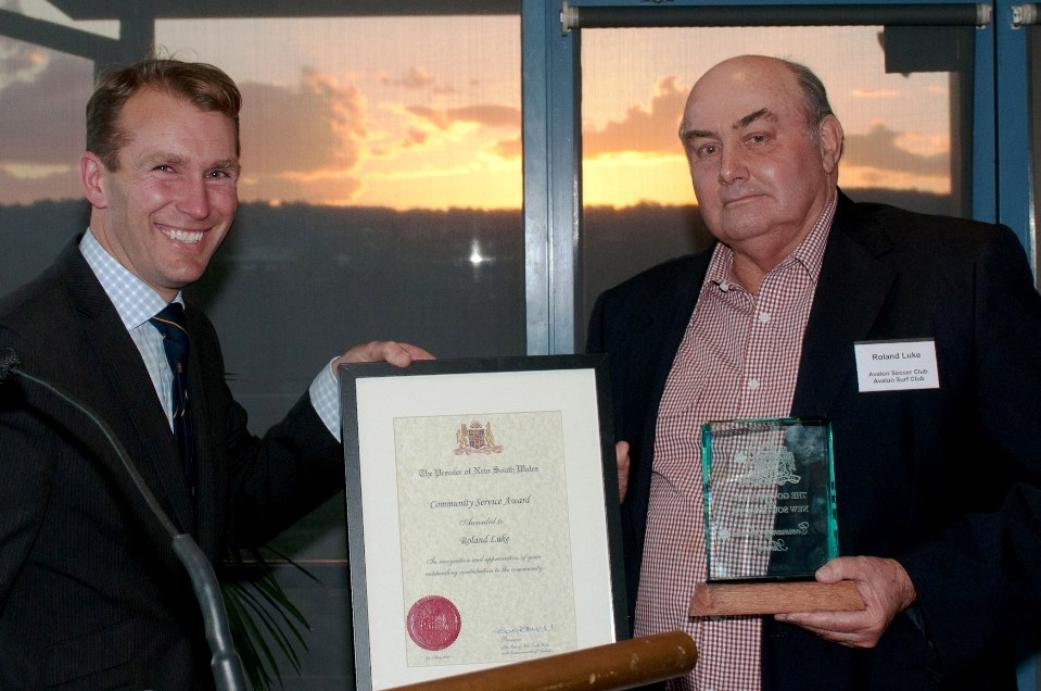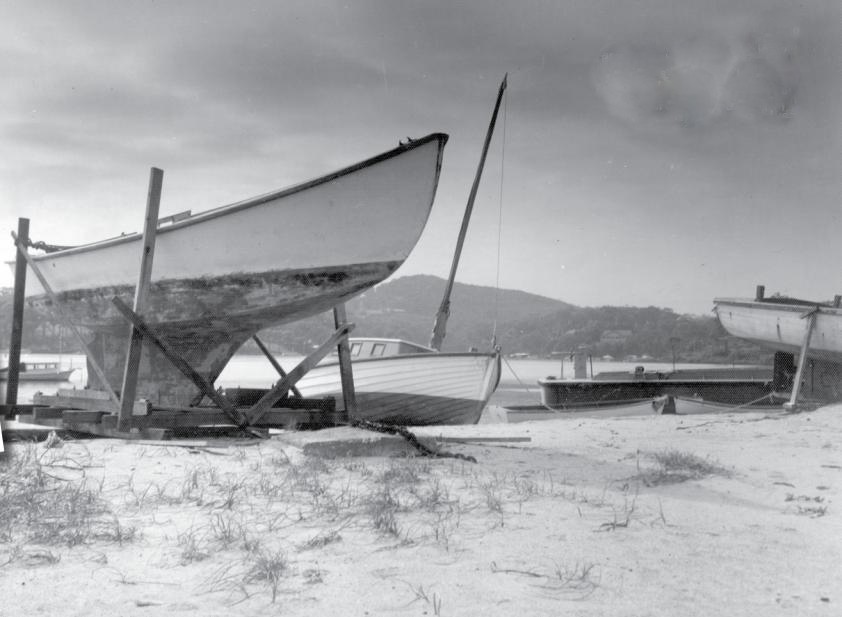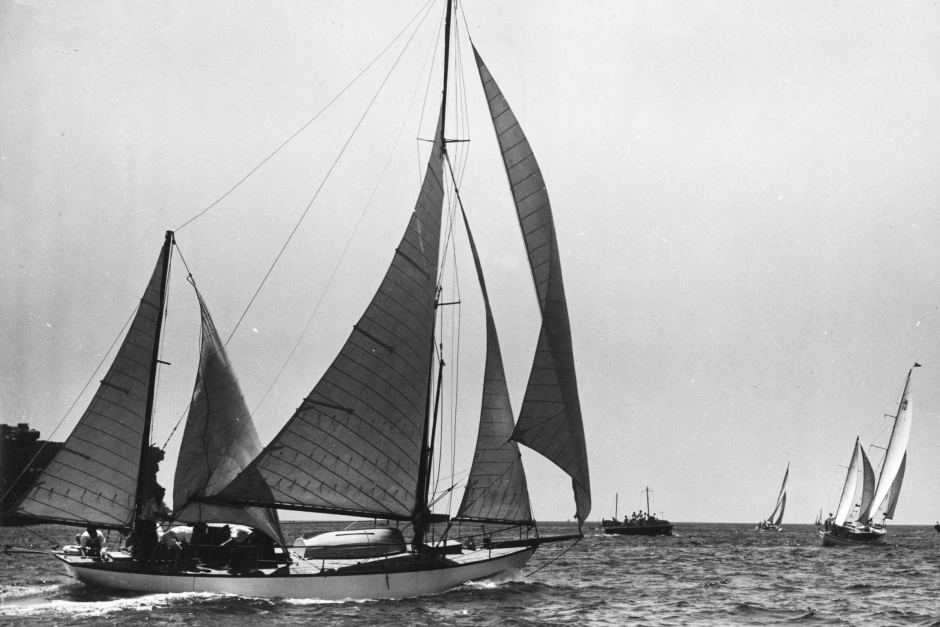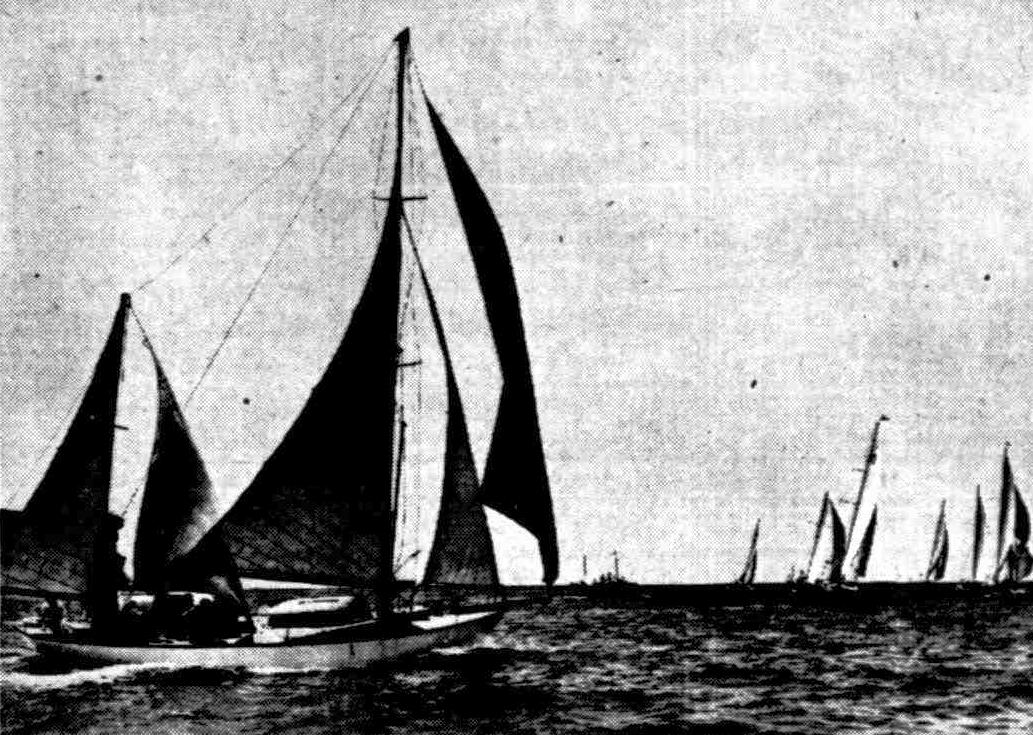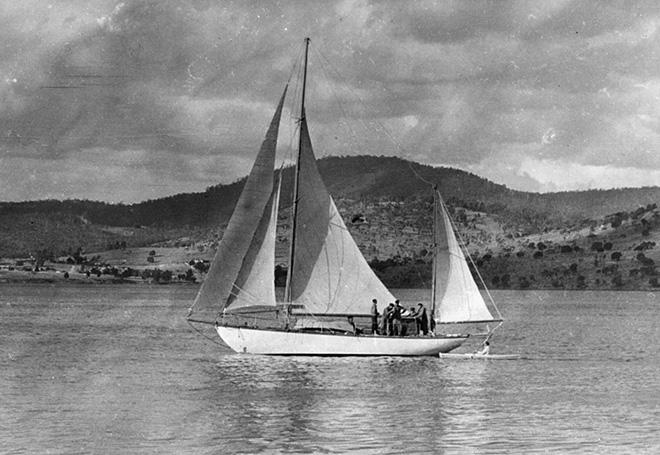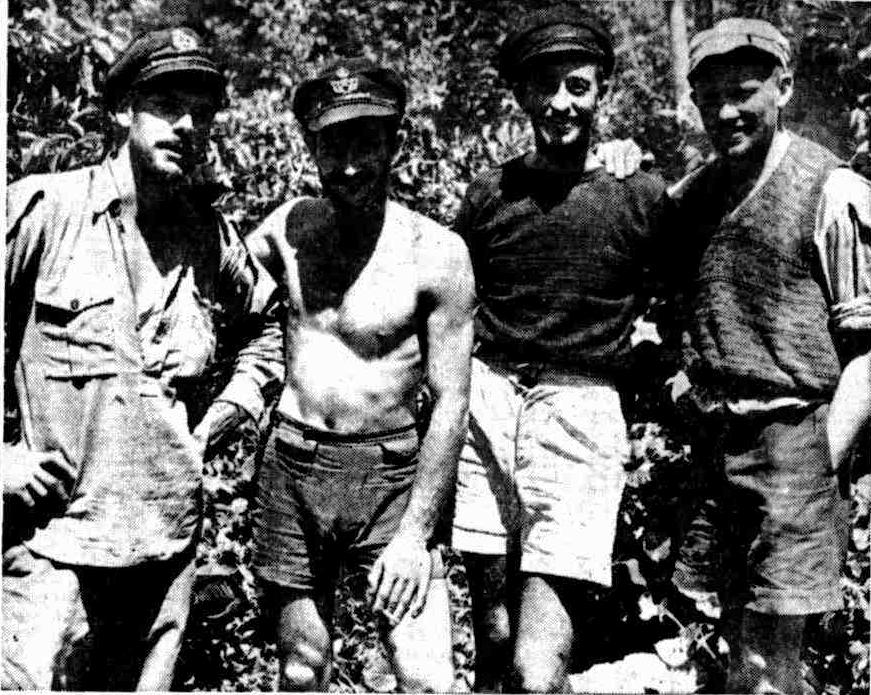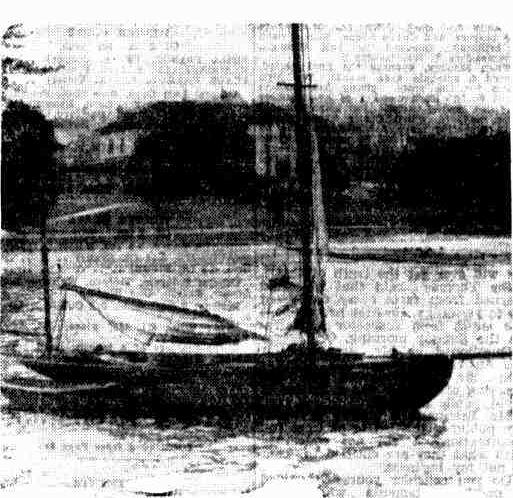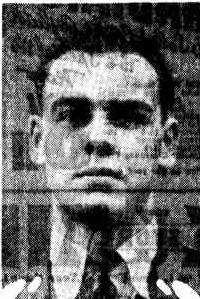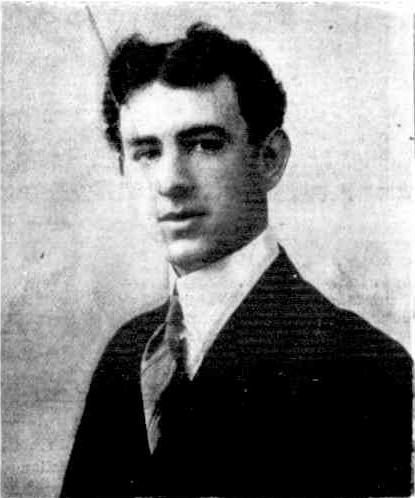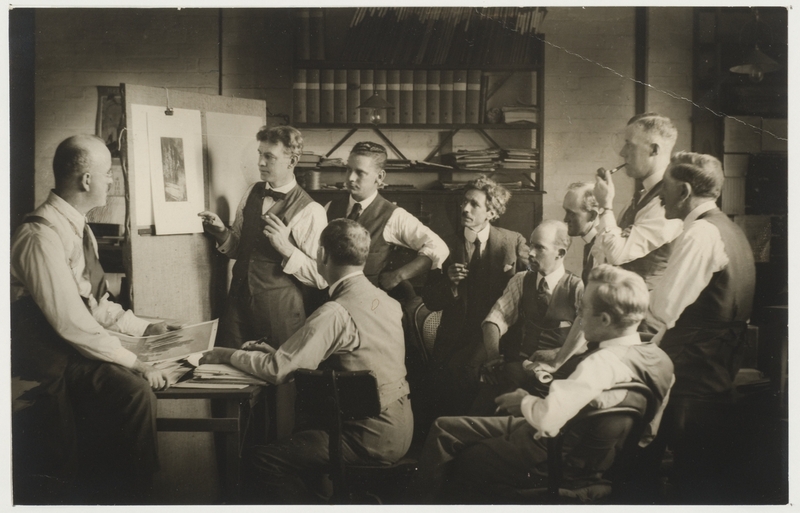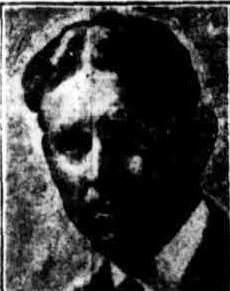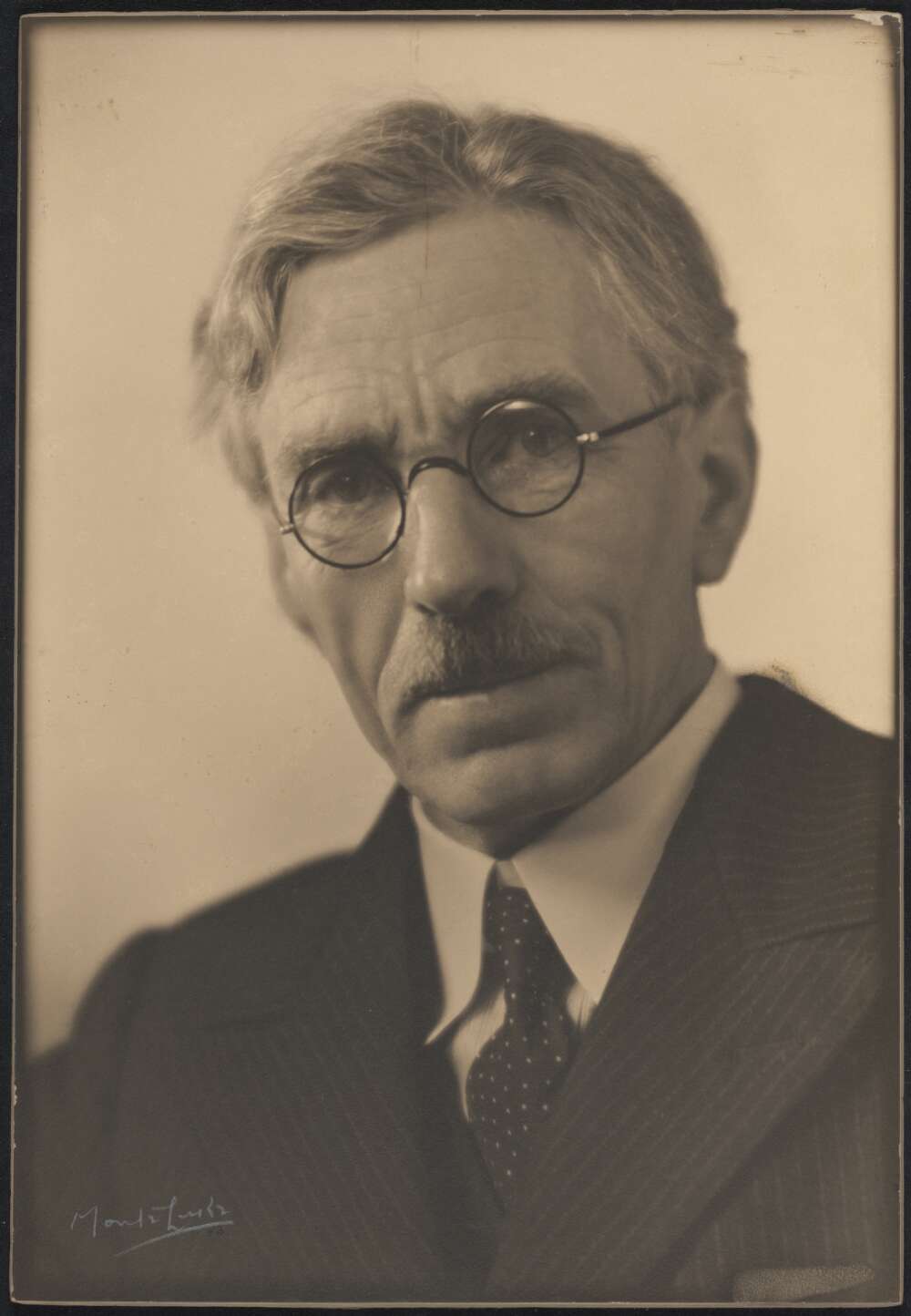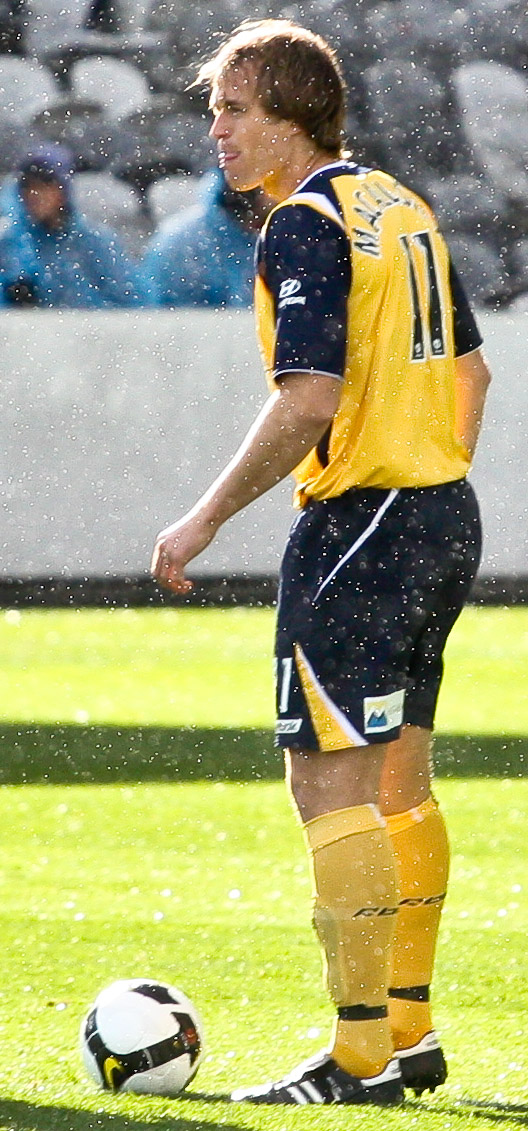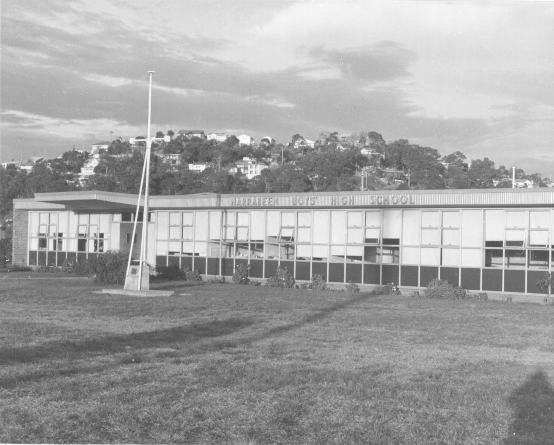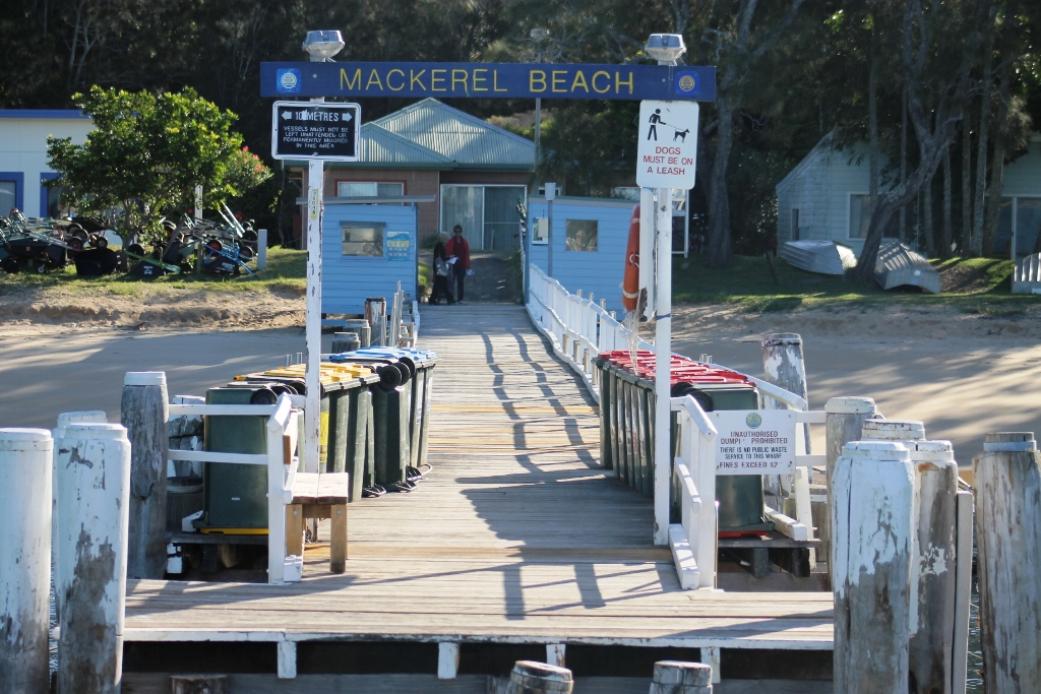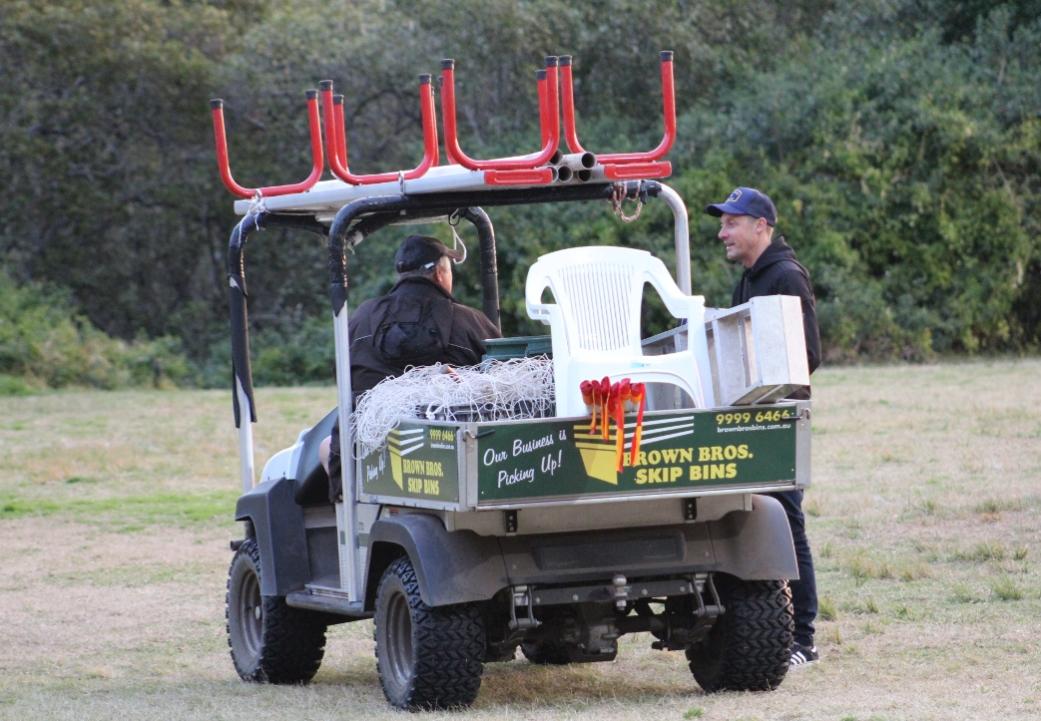Bridge Fire Hazard
Sir,-Being ignorant of the possible effects to the harbour bridge in the event of a loaded petrol waggon becoming ignited while under the arch, I was hop-ing to read some sensible answers to Mr Doig's sincere enquiry ("Herald," May 30).
Mr. Charles Lee's reply ("Herald," June 1) is suggestive of typical official inertia towards such problems, and is completely repudiated by the tragic accident in America very recently, when a petrol waggon collided with a tram.
An example of unsuspected danger literally on our doorstep is the fact that, a few days ago, a quantity of explosive was stored aboard a wooden vessel in Double Bay, and being in the midst of a dense residential area, could have caused untold damage in the event of some unexpected accident.
I invite some expert opinion on Mr. Doig's queries.
PETER LUKE.
Church Point.
At Bayview, 1950 - photo by Peter Luke
The 1945 Sydney to Hobart Yacht Race was the inaugural running of the annual "blue water classic", the Sydney to Hobart Yacht Race. It was hosted by the Cruising Yacht Club of Australia based in Sydney, New South Wales. The race was initially planned to be a cruise planned by Peter Luke and some friends who had formed a club for those who enjoyed cruising as opposed to racing. The plan was changed, however, when a visiting British Royal Navy Officer, Captain John Illingworth, famously suggested, "Why don’t we make a race of it?"
The inaugural race, like all those that have followed, began on Sydney Harbour, at noon on Boxing Day (26 December), before heading south for 630 nautical miles (1,170 km) through the Tasman Sea, past Bass Strait, into Storm Bay and up the Derwent River, to cross the finish line in Hobart, Tasmania.
The 1945 fleet comprised 9 starters. Of the 9 starters, 8 yachts completed the race. Illingworth's own vessel, Rani, won the inaugural race in a time of 6 days, 14 hours and 22 minutes.
Peter Luke's record for longest-ever time to finish the course stands to this day: 11 days, 6 hours, and 20 minutes.
Wayfarer is a racing and cruising yacht that was built at Gladesville, Sydney in 1940 by Charlie Larson for Peter Luke. 12.2m (40ft) Alden Bermudan wooden ketch, built for owner Peter Luke, also a founding father of the CYCA and Sydney to Hobart Race.
1945 Fleet
9 yachts registered to begin the 1945 Sydney to Hobart Yacht race. They are:
Yacht Nation Skipper Previous Starts LH (Elapsed) Time d:hh:mm:ss HW (Corrected) Time d:hh:mm:ss
Ambermerle (NSW) J Colquhoun, C Kiel NA
Archina (NSW) P Goldstein NA RETIRED RETIRED
Horizon (NSW) J R Bartlett NA
Kathleen Jack Earl NA
Mistral II (NSW) Robert Evans NA
Rani Captain John Illingworth, RN NA 6:14:22:00 4:9:38:00
Saltair A E and R M Walker NA
Wayfarer (NSW) Peter Luke NA
Winston Churchill P Coverdale NA
Wayfarer competing in the 1945 Sydney to Hobart race - photo courtesy Cruising Yacht Club of Australia - which also appeared in many newspapers throughout Australia:
SYDNEY TO HOBART YACHT RACE.
Competitors in the yacht race from Sydney to Hobart clearing the heads of Port Jackson on Boxing Day.
WAYFARER HAD STRENUOUS TRIP IN OCEAN RACE
WINDS of gale force made the going tough for Wayfarer, Sydney-owned yawl, which crossed the finishing line at Hobart at 5.21 pm yesterday, last of the eight boats which completed the course in the Sydney-Hobart ocean race.
WAYFARER'S sailing time from Sydney was 270h. 21m. and her corrected time (handicap deducted) 187h. 43m. 52s. Wayfarer's voyage from Sydney lasted more than 11 days, but the owner-skipper (Mr Peter Luke) and his crew of five enjoyed every minute of it.
"It was great fun, and we would like to have it all over again," said Brig A. J. Mills-he was the ship's sail-mender, and had a busy time, as the mainsail was ripped twice, the mizzen once, and staysail once.
"We had gales every second day," said Mr Luke, "and when it wasn't i blowing a gale it was almost a flat calm."
Wayfarer lost sight of other yachts in the race the first night out from Sydney, and did not sight another craft of any kind until she passed a river steamer coming up the Derwent Estuary yesterday.
Wayfarer on the Derwent - photo courtesy CYCA
Accurate Navigation
Passing out of sight of land off Gabo, Wayfarer stood well out to sea and made her Tasmanian land-fall off St. Patrick's Head on Thurs-day, Jan. 3. Navigator W. Lieberban had done a good job, as he was less than an hour out in his calculations on the trip down from Gabo.
The yacht drifted nearly all New Year Day; at noon the navigator "shot the sun," and found that the ship's position was exactly at the intersection of the 40th parallel of Latitude and Longitude 150 deg. E.
On Thursday afternoon the wind became too strong for the yawl to stagger under, and the skipper sheltered under Schouten Island for the night.
Wayfarer rounded Tasman Island on Friday night, but could make little progress into Storm Bay against the fierce north-westerly.
No mention had been made of Wayfarer's progress in news broad-casts picked up on the ship's radio receiver, and the skipper decided to make for Port Arthur. As soon as the crew got ashore at Port Arthur on Saturday afternoon, they rang their relatives and friends in Sydney and relieved them of the anxiety which many must have felt in the absence of news of the yacht's whereabouts.
Licensee of the Hotel Arthur (Mr T. Pitman) put on a barrel of beer specially for Wayfarer's crew, and they enjoyed their first drink of draught, beer since they left Sydney on Boxing Day. A local resident (Mr Derwent Martin) treated the ship's company to a crayfish supper, which was the gastronomic highlight of their voyage.
Log-Line Severed
Wayfarer put to sea again early yesterday morning, and after a strenuous beat up Storm Bay against a squally north-wester, came up the estuary in the afternoon and crossed the line at Castray Esplanade.
There was no shortage of provender aboard Wayfarer, and the crew had a hot meal every day, some-times twice a day. Coming down I the East Coast they caught some barracouta, but after the fish had been cleaned, a big sea swept them overboard.
Off Maria Island a barracouta made a vicious lunge at the ship's log, trailing astern. It severed the log-line and the yacht finished the voyage minus a log.
Members of the crew are: Mr Peter Luke (owner and helmsman), Brig Mills, Messrs L. Willisford (cook), P. Harris (chief mate), W. Lieberman (navigator), and G. Ruggles (for'ard hand).
The sailing committee of the Royal Yacht Club will meet today for the purpose of declaring the result of the race, after full consideration of any infringements of rules that may have rendered any of the competing yachts liable to disqualification.
Skippers and crews of the eight yachts that took part in the (540 miles' ocean race will be guests of the RYCT at the clubhouse tomorrow night. The result of the race will be officially pronounced at the function. The Governor (Admiral Binney) will be present. The Lord Mayor (Mr Soundy. MHA) will tender the competing yachtsmen a civic reception at the Town Hall tomorrow morning. Admiral Binney will be present.
The Catalina flying boat, whose observation services were appreciated during the race, planned to return from Hobart to the Mainland early this morning.WAYFARER HAD STRENUOUS TRIP IN OCEAN RACE (
1946, January 7).
The Mercury (Hobart, Tas. : 1860 - 1954), p. 2. Retrieved from
http://nla.gov.au/nla.news-article26163893
Mr. Luke may have been slowest in the first Sydney to Hobart but did much better in this race:
THIRD YACHT ARRIVES
Auckland to Sydney yacht race.— Members of the crew of Wayfarer photographed after arrival in Sydney. From left: Peter Luke (skipper), Brian Beckett, Mick Slater and Max Carson. Jack Doyle, navigator, is not in the picture. THIRD YACHT ARRIVES (
1948, February 6).
Daily Advertiser (Wagga Wagga, NSW : 1911 - 1954), p. 1. Retrieved from
http://nla.gov.au/nla.news-article144741356
ANOTHER YACHT REACHES SYDNEY
THIRD TO FINISH IN RACE FROM AUCKLAND
With torn sails flapping above her battered hull, Peter Luke's yacht. Wayfarer, third of the Auckland-Sydney yacht race competitors to complete the trip, crossed the finishing lane at Watson's Bay, shortly after 6 a.m. today. Secretary of the Royal Prince Alfred Yacht Club. Mr. J. A. Kyd, said that Wayfarer is second on the corrected time. So far the lead on handicap is still being held by Peer Gynt, which arrived yesterday, some hours after Kurrewa. ANOTHER YACHT REACHES SYDNEY (
1948, February 4).
Singleton Argus (NSW : 1880 - 1954) , p. 2. Retrieved from
http://nla.gov.au/nla.news-article84604801
YACHT "ARRESTED."
Fishermen Claim £350 for Salvage.
SYDNEY, June 15.-
The theft of the yacht Nereid, which was found abandoned and drifting out to sea on Thursday, has had an unusual sequel in the "arrest" of the vessel, pending a claim for salvage. An order has been issued by the Admiralty division of the Supreme Court, commanding the marshal in Admiralty (Commander Spain) to arrest the Nereid and to hold it in custody until the claim for salvage by two Italian fishermen, Giuseppe Puglissi and F. Bianchini, has been settled. The yacht now lies at her moorings in Taylor's Bay (whence she was stolen) with the Court's order nailed to the mast, and in charge of the shipmaster. It is understood that the salvors, who were in their launch when they sighted the drifting yacht and towed it into Watson's Bay, are claiming £350, which they contend is two-thirds of the value of the yacht. The owner of the yacht is Mr. Peter Luke, of Clifton Gardens, Sydney. YACHT "ARRESTED." (
1936, June 16).
The West Australian (Perth, WA : 1879 - 1954), p. 17. Retrieved from
http://nla.gov.au/nla.news-article40725471
YACHT, WITH ALL SAILS SET, FOUND ABANDONED
Mystery In The Harbor
CABIN RANSACKED
Saved From Reef NEARLY HIT BY LINER
POLICE are faced with a harbor mystery following the discovery, early to-day, of a 28-ft. yacht, abandoned, with all sails set, between the Heads. The incoming liner Mooltan narrowly missed running it down, and it was drifting towards South Reef when an Italian fisherman clambered on board and prevented a crash.
The police are investigating the possibility that the case may be one or harbor piracy, what happened to the persons who may have been on board is unexplained. Owned by Peter M. Luke, of Iluka-road, Clifton Gardens, son of Mr. Monte Luke, city photographer, the yacht, the Nereid, had been left at its moorings In Taylor Bay 011 Sunday. There was then no petrol on board, but police investigations to-day revealed petrol in the tank, as well as a full four-gallon tin.
When Luke left the yacht on Sunday he carefully put away the Jib and mizzen sails, and tied the mainsail In position. He then rowed ashore in the dinghy, which was still tied up this morning. The maid at Mr. Luke's home saw the yacht late yesterday afternoon. At 0.48 a.m. to-day the Mooltan was entering the Heads when the pilot saw, looming through the fog, the yacht with all sails set. The lib was partly dragging In the water.' The Mooltan was brought almost to a standstill, and, caught by a breeze, the yacht was swept clear just in time. Dr. McCann, one of the port doctors, was being taken out to the Mooltan by Nat Brown in a launch.
and he and Brown witnessed the incident. Cabin In Disorder Guiseppe Puglisi, of Madlin-street, Hunter's Hill, and P. Bianchinl were entering the Heads just behind the Mooltan, with a large haul of snapper. The direction of the wind changed slightly, and the Nereid headed for the reef. Puglisi yelled, but received no answer. While hl3 companion steered their launch closer, he leaped on board the yacht and fixed a rope to it.
When it was only about 20 yards from the reef, the yacht was steered clear and towed to the Watson's Bay wharf, where it was boarded by Constable Lawless (Vaucluse), he found the cabin in a state of disorder. A looker had been broken open and the contents scattered over the floor. Some charts were not in their usual position, and two overcoats were missing.
Charred Paper
Greasy matches were found on the floor of the cabin, suggesting that someone on board had tried to start the engine in matchlight. An unsuccessful attempt had also apparently been made to light the navigation lamp, which contained kerosene. Several pieces of charred newspaper appeared to indicate that those on board had lit a flare, possibly with the intention of seeking assistance. No unusual light was seen by other persons on the harbor, however. Luke told Sergeant Selwyn later that he was certain that there was no petrol on board when he left the yacht on Sunday. "Whoever took my yacht obviously intended to go on a sea voyage," said Luke, "but perhaps the fog frightened them, causing them to abandon the vessel."
One theory is that the persons who took the yacht fell overboard, and another that, having failed to start the engine, they dived overboard and swam ashore. Detective-Sergeant Dunnett is making inquiries.
Yacht Found Between Heads
The yacht Nereid, which was today found abandoned, with all sails set, between the Heads.
Mr. Peter Luke, owner of the yacht, Nereid, which was to-day found abandoned.
Monte Luke born Charles Robert Montague Luke, (1885-1962) was an Australian photographer, actor and director.
Born in Geelong he worked as an actor on stage before developing an interest in stills photography. He was appointed official photographer for J.C. Williamson, taking portraits of stage stars and publicity shots of plays in production. In 1915 he was placed in charge of film production for J.C. Williamson Ltd after Fred Niblo left the country, and directed three features for them. He then set up a photography studio and became one of the leading photographers in the country.
Select Filmography
For Australia (1915) - director
Within the Law (1916) - director
Seven Keys to Baldpate (1916) - director
The Monk and the Woman (1917) – actor
MR. MONTE LUKE
A Member of the Julius Knight Co., now appearing in "A. Royal Divorce" at the Princess's. Mr. Luke is one of the younger members of the Julius Knight Co., and has been on tour with the company for the last couple of years. Like Oscar Asche, he was born at Geelong, but graduated to Melbourne, where he was well known in amateur circles before joining the "prof."
Photo by Lafayette, Collins-st., Melbourne.
MONTE LUKE'S ART
In the 20' studies of Maggie Dickinson, now on view at 51 Castlereagh-street, Mr. Monte Luke may claim still another triumph in photographic art
Although, the studio has been such a brief time in existence, his beautiful portraits in oils are already well-known amongst the art lovers of this city. These studies are not so much portraits as pictures. Better still, they are impressions. The effect obtained is so remarkable that it is not too much to say there is a decided Whistler suggestion about this work. Probably it is due to the surprising fact that no re-touching is necessary. Everyone knows that, while retouching increases the beauty of the subject, it is also responsible for a corresponding loss of individuality and expression. Mr. Luke’s pictures do more than reproduce — they suggest. The crudity of mere flesh and blood is subdued to a delicate spirituality. . . We have too -long suffered the musical-comedy grin and the complacent three-'meals-a-day expression of the ordinary photograph. On blue days, even, a friend's face must be turned to the wall if the smile is too insistent. Mr. Luke's studies have a restful quality; they are so soft, so intangible. Certainly Miss Dickinson has never appeared so attractive as in this series by Mr. Luke. There is an amazing amount of life about the dancing poses, one of the photographer's hardest tests, as no studio picture can be taken with less than two seconds' exposure. Hence there is often a rigidity and sense of weight quite foreign to the subject. The artist has successfully eliminated this. Miss Dickinson is depicted in turn, as a nymph, the spirit of Spring, a crystal gazer, a Japanese girl, and in many other delightful poses. MONTE LUKE'S ART (
1919, June 7).
Smith's Weekly (Sydney, NSW : 1919 - 1950), p. 2. Retrieved from
http://nla.gov.au/nla.news-article234256303
PHOTOGRAPHY.
BEAUTIES OF THE CAMERA EXHIBITION IN SYDNEY.
When Shaw expressed his preference for photography over painting as one of the arts he evidently had in mind, the brilliant class of pictorial photography, .examples of which graced the salon of Kodak's yesterday. Certainly the exhibition by the Sydney Camera Circle was of a high standard, and the excellence achieved is all the more noteworthy when its short existence is considered.
It was in late 1916 that six lovers of the photographic art formed a circle, with the object of establishing a distinctive Australian school. The circle has apparently achieved this ambition Judging by Its work, and the individual successes of members at the London Salon of Photography, and the International Salon of Los Angeles testify to the advance in the art made by members. Australians should rise to the "lofty height:" in this art seeing the great field of study in the ever-changing moods of their own country. And while the camera loses undoubtedly the subtle touch of Nature, reproduced so finely in the masterly landscapes of Penleigh Boyd, yet the photographer, while missing the color, catches the light and shade and that marvellous suggestion of movement so finely presented in some of yesterday's exhibits, particularly C. W. Bostock's "An 'Old World Harbor/' and "Flower Sellers" (Durban), and also Arthur Ford's "The Spell." The latter is typically Australian to one who has memories of the Australian hinterland. It shows a mob of sheep spoiling after a long trek, and the stockmen and the dogs slaking their thirst from, the river, so smooth and quiet in the noonday sun. All is peaceful, and Nature's pensive mood is caught by the faithful camera.
Through the exhibition runs these studies of Nature In less noisome ways, and the same artist's "Along the Dusty Road," showing the passage homeward of the team after its day of toil, conveys the sense of movement very finely indeed. Quite different is the cameo of W. S. White. Trees, caught by the sunlight, stand out from the surrounding gloom, and appear strangely beautiful. Somewhat similar is the same photographer's "Spectres." Well-titled indeed, those trees, so fantastically touched by the sun. E. N. Poole and S. W. Eutrope contribute some fine work. Poole is particularly at home in his cloud and sunlight effects. And he is seen at his best perhaps in ‘Presage’. Nature’s grandeur speaks in such a work as "The Cloud Majestic," and Mr. Eutrope made a fine capture indeed with this. His artistry has delightful results, particularly in "Shadow Romance" and "Tranquil Morn." Nature in its quieter moods seems more beautiful, and .the intense peace reflected in these studies perhaps accounts for the preference the majority of exhibitors show for this phase. One lingers long in this exhibition, and looks again and again at most of the works, catching fresh beauties in the silent scenes. J. E. Paton and Chas. . Wakeford' provide some notable work, especially the latter's "Beaching the Boat," a subject full of the life and movement of youth. D. J. Webster's "Sunlight and Mist" is an impressive study, and the memory of it lingers. Other exhibitors whose work is of a high standard are: C. Laseron, H. Mallard, and Monte Luke. The exhibition, which is well worth seeing, will continue until February 28. PHOTOGRAPHY. (
1921, February 15).
The Daily Telegraph (Sydney, NSW : 1883 - 1923), p. 7. Retrieved from
http://nla.gov.au/nla.news-article239725600
In November 1916 The Sydney Camera Circle of Pictorialists is formed. Its six founders are Cecil Bostock, Harold Cazneaux, Malcolm McKinnon, James Paton, James S. Stening and William Stewart White, who all sign a manifesto, pledging to advance and promote a Pictorialist photography devoted to Australian sunlight and shadow.
Harold Cazneaux, Sydney Camera Circle, 1924. First Australian Salon of Photography meeting in Sydney, 1924.
From left to right: W. White holding print, Monte Luke at easel, J. Paton, H. Cazneaux, S. Eutrope, C. Wakeford, Webster with pipe, A. Smith in front: J. McColl, C. Bostock Image No.: .a4260030r, courtesy State Library of NSW.
MR. MONTE LUKE'S EXHIBITION.
That a photograph may be an expression of personality as much as is a painting or a pianoforte sonata is one of the things demonstrated by Mr. Monte Luke's exhibition of camera pictures, which was opened to the public by the Minister for Education (Mr. Bruntnell) at the Strand studio yesterday.
It is a comprehensive, collection, specially strong on the side of portraiture. In this section, one of the most outstanding exhibits is, "O Solo Mio," a vigorously toned and convincingly posed study of an Italian serenader, which has been exhibited at the London, Canadian, and Batavia salons. Restfulness of treatment characterises "Benno Moseiwitsch," a picture of Eve Grey shows effective contrast in tone, and there is much else of interest. One of the best of the landscape studies is "Gaunt Sentinels of the Marsh," in which the row of trees outlined against a grey sky calls up thoughts of bleak wind and threatening storm.
The exhibits, said Mr. Bruntnell (who was introduced by Mr. John Harrington) marked an achievement in what must be regarded as a new departure in art. Progress in any given direction was necessarily slow - it was only when one compared the rock carvings of primitive man with the frescoes of Raphael that one fully realised what progress the art of painting had made, for instance. He considered it highly improbable that the man who discovered the elements of photography realised that he had done anything of great artistic value. The camera was capable, not only of reproducing the moods of nature, but of portraying subtle shades of character. It was gratifying to see Australians winning a place for themselves in the art salons of the old world.MR. MONTE LUKE'S EXHIBITION. (
1924, March 11).
The Sydney Morning Herald (NSW : 1842 - 1954), p. 5. Retrieved from
http://nla.gov.au/nla.news-article16109238
CAMERA PROGRESS
Newcastle Photographers ARTISTIC PRINTS
The wonderful progress of photography as a branch of the fine arts will be shown at the exhibition, promoted by the Newcastle Photographic Society, which will be opened in Messrs. W. Winn and Cm, Ltd.'s new exhibition hall to-morrow afternoon.
The catalogue has been compiled, and it shows that there are 231 pictures. Of the total number of pictures 160 represent the work of members of the society and although the society is modest in its claims, and only exists for educational purposes, it is confidently hoped that many of the local prints will rank as really artistic. At the same time it has been felt desirable, as far as possible, to include work by most of the members as an indication of the progress made during the past 12 months.
SALON HONORS
Pictures forwarded by the president and members of the N.S.W. Photographic Society and the Sydney Camera Circle, are of a high class. Mr. Monte Luke is sending 19 pictures, nearly all distinguished by salon honors in England and America. Mr. Arthur Smith is forwarding 15 pictures, seven of which are salons, and some of which depict Newcastle subjects. Mr. Douglas R. Hill, president of the N.S.W. Photographic Society, is sending two pictures which have scored honors in the London and Australian salons and the British Empire Exhibition. Mr. Harold Bedggaad is sending five pictures, including salon pictures. Other Sydney artists of repute will be represented by Messrs. Tindale, Potter, H. Jones and E. F. Pollock.
POPULAR PRINTS
Mr. Pollock is a famous animal and bird photographer. His pictures are small, clever and dainty, and include miniature prints of the famous horses Beauford, Gleaming, and The Hawk, as well as many beautiful studies of animals and birds. With the exception of Mr. Luke's work, which is not for sale, most of the pictures from Sydney may be purchased on application to Messrs. W. Winn and Co. Ltd., or to officers of the Newcastle Photographic Society. There will be no duplicates for sale, as most of the pictures cannot be re-produced, being in bromoil. In the case of Mr. Pollock's popular work, however, duplicates may be ordered. The opening of the exhibition will be presided over by the Mayor (Alderman Kilgour). Other speakers will be Rev. Dr. Crotty (Dean of New-castle). Rev. Joseph Lundie and Mr. H. Morris Cohen. As an indication of the position which some Newcastle camera men occupy, reference may be made to Messrs. G. Daniel and A. E. Bain-bridge, who carried off the gold medals for bromoil and bromide enlargements at the last show. CAMERA PROGRESS (
1924, July 14).
The Newcastle Sun (NSW : 1918 - 1954), p. 1. Retrieved from
http://nla.gov.au/nla.news-article165276909
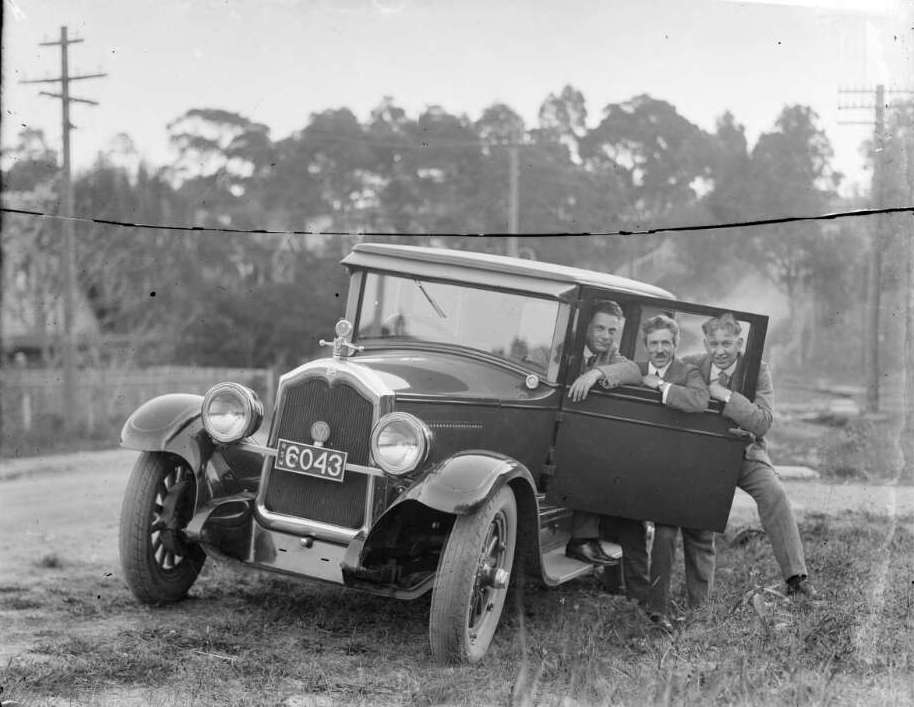
James Paton, Harold Cazneaux and Monte Luke beside a car, New South Wales, 1926. From PIC Album 950 #P1067/1-353-Cazneaux family photograph collection [picture] IMage No.: nla.obj-144144277-1, courtesy National Library of Australia.
A NEW F.R.P.S.
MONTE LUKE'S HONOR
CABLE advice has been received in Sydney that Mr. Monte Luke, the well- known camera artist, has been elected a Fellow of the Royal Photographic Society.
Mr. Monte Luke.
Dr. Julian Smith, of Melbourne, has been elected an Associate. Mr. Luke's honor is the highest that a photographer can attain in the British Empire, the Society being recognised by camera men as the equivalent of the Royal Academy to artists. The articles, of the Society provide: 'Fellows shall be those Associates who, in the opinion of the Council, possess distinguished ability or originality.' Mr. Luke. F.R.P.S.. has the distinction of having been elected an Associate and a Fellow in the same year, the minor honor having been bestowed on him early this year. The distinction he has attained will be more rapidly appreciated when it is known that Mr. Luke has been exhibiting with the Society for ten years, and, excellent as Sydney knows his work to be, it is only now that the highest honor has come to him. A NEW F.R.P.S. (
1928, December 18).
Evening News (Sydney, NSW : 1869 - 1931), p. 16. Retrieved from
http://nla.gov.au/nla.news-article115700662
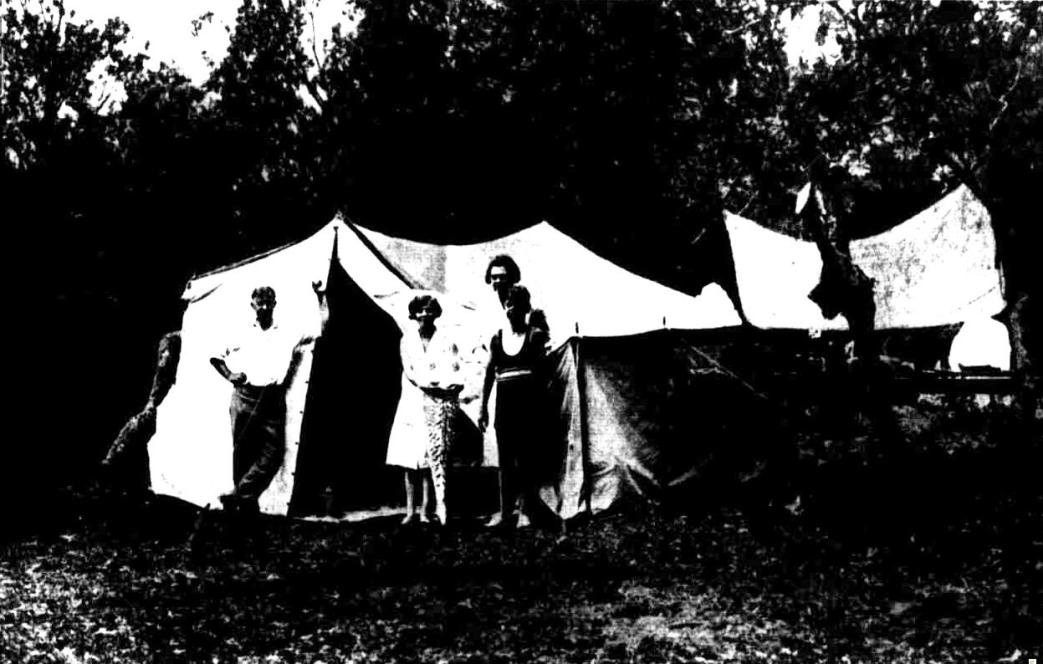
Monte Luke, le célèbre artiste photographe de Sydney, Madame Monte Luke et leur famille à Avalon Beach, près Sydney. LE "MOTOR CAMPING OUT." (1928, October 26). Le Courrier Australien (Sydney, NSW : 1892 - 2011), , p. 3. Retrieved from http://nla.gov.au/nla.news-article161724364
Portrait of Harold Cazneaux [picture] / Monte Luke Call Number nla.obj-136260606-1 - Created/Published [193-?], courtesy National Library of Australia
Brides Are Best Camera Subjects Says Monte Luke
REMEMBERING more than 5,000 brides he himself has photographed on their wedding day, Monte Luke-who has been a photographer for nearly 50 years-still thinks they are the easiest of all camera subjects.
"But," he adds, "I have never known one wedding where there wasn't a panic in the bride's household.
"I always seemed to arrive on the scene at the height of the panic when everybody for-got I was just a photographer.
"Once I had to iron the bride's dress because her mother was too upset. Another time I had to button a bride into her dress, and fix her veil.
"One bride was in tears because the wrong flowers were put in her bouquet. So I set off for the nearest nursery, bought the flowers, remade the bouquet, took my pictures, and she went happily to the altar."
"I LIKE THIS portrait of Charles Lloyd Jones, because it gives a picture and a satisfactory rendering of character-again, a portrait which is not merely a photograph. A critic said that this portrait was 'an alert, forcible presentation of a business executive-it shows the subject to be a man of personality.' "
Brides are always tense, nervous, and excited, but, says Monte Luke, they don't mind going to any trouble to make sure their photographs will be flattering ones.
In contrast are the members of the Royal Family who, according to Mr. Luke, are the hardest people of all to photograph-"It is a real trial for them. They rarely relax in front of the cameras, and never allow more than a few minutes for sittings."
The King and Queen, the Duke of Windsor, the Duke and Duchess of Gloucester have all "sat" for Mr. Luke.
"The Duke of Windsor was then only a young lad on a tour of Australia as the Prince of Wales, and he was more nervous than I was," said Mr. Luke.
Perhaps the best key to the amazing variety of personalities he has crowded into the years of his career are his scrapbooks. They are full of portraits, faded proofs, clippings, and letters, which represent a great cross-selection of Australian people as well as nearly every world famous personality of the day.
Asked to name the most beautiful woman he has ever photographed, Mr. Luke shook his head.
"Wouldn't do, you know; and anyhow it would be a very hard thing to do," he said. "Personality, charm, character, and that little 'extra something' in a person can make up for anything that is lacking in a woman's face.
"Features are most important, but a woman should never worry if her features are not perfect."
"I LIKE THIS picture of a child be-cause I think it is a good example of how far the camera can go in making a picture of a child much more than just a photograph. The tone Quality and com-positional arrangement are pleasing."
He has, however, no difficulty in recalling the most temperamental woman to face his camera.
"Pavlova-that little bit of thistle-down; she expected, and demanded, excellent pictures but would never allow time for a sitting," he said. "If she consented to hold a pose for a few short seconds, it was get it then, or else."
One of his most unassuming subjects was Amy Johnson, the first woman to fly solo from England to Australia. She sat for her portrait with Mr. Luke at Sydney's Government House only a few hours after completing her record breaking flight.
"She refused to be photographed in her overalls, and wore a very simple little feminine dress," Mr. Luke remembers. "There was nothing at all about Amy Johnson to indicate the courage she must have had."
Before taking up seriously the profession from which he has now retired, Mr. Luke was on the Australian stage for about five years, and also appeared in some of the earliest Hollywood films.
He was acting with J. C. Williamson's when he was selected to go to Hollywood as a "spy." The firm was then thinking of going into 'the movie field, and young Mr. Luke was to come back with all the latest ideas on production.
During his stage career, Mr. Luke kept up his hobby of photography. Between acts he was always in demand to take pictures of the leading ladies and gentlemen of the day. Eventually he became the first full time photographer for "The Firm" and left the stage. "Brides Are Best Camera Subjects,"Says Monte Luke (
1950, June 25).
The Sunday Herald (Sydney, NSW : 1949 - 1953), p. 11. Retrieved from
http://nla.gov.au/nla.news-article18478272
John Thomas Devitt, AM (born 4 February 1937) is an Australian sprint freestyle swimmer of the 1950s and 1960s, who won a gold medal in the 100-metre freestyle at the 1960 Summer Olympics in Rome. He won in controversial circumstances, being awarded the gold medal despite the timekeepers recording a slower time than the American silver medallist Lance Larson. He also claimed a gold medal at the 1956 Summer Olympics in Melbourne, in the 4×200-metre freestyle relay.
Devitt was initially trained by Tom Penny at the Clyde Swim Club, based at the Granville Pool, until it disbanded in 1947 and he moved to Manly Swim Club along with Penny. Devitt remains a member of the Swim Club. Penny often allowed his swimmers to train in warm waters by having them swim against the current of discharged water from a power plant. Devitt believed that such training gave him an advantage as it taught him to be unaffected by "rain, heat, currents or any other natural or unnatural variables".
Devitt's first forays into national competition were at the 1952 Australian Championships, where he was continually in the shadow of club-mate Barry Darke, who set five Australian records in their age group. Devitt trailed Darke again at the 1953 championships, but Darke retired afterwards to become a mechanic, leaving Devitt to dominate his age group. However, in the open ranks, he was often beaten by Jon Henricks in the sprint events, and Gary Chapman and Murray Rose in the longer events. Rose and Henricks went on to claim individual gold at the 1956 Summer Olympics. At the age of 18, with Henricks initially sidelined by injury, Devitt was named as the captain of the New South Wales team for the 1955 Australian Championships. However, Henricks recovered and relegated Devitt to silver in the 110-yard freestyle. He claimed silver in the 220-yard freestyle, behind Rose. Devitt's decision to concentrate on sprinting led to conflict with Penny, and he then left Penny and began self-coaching. After beginning to regress, Devitt considered retirement, until he joined Sam Herford at the Spit Baths alongside Murray Rose.
At the 1956 Australian Championships, Devitt finished third in the 110-yard behind Henricks and Chapman, and fifth in the 220-yard behind Chapman to gain Olympic selection. After a ten-week national training camp at the Tobruk Pool in Townsville, Queensland, Devitt was named as the national captain for the 1956 Summer Olympics in Melbourne. Devitt's first event was the 100-metre freestyle, where he won his heat and then his semi-final to qualify in second place for the final, where he matched Henricks for the first 80 metres, before Henricks surged to claim gold. Chapman completed an Australian sweep by finishing third. For the 4×200-metre freestyle relay, Devitt had clocked the fourth fastest time at the Australian Championships. After swimming the fastest leg in the heats of the relay, he was selected along with Rose, Henricks and Kevin O'Halloran for the final. The Australians won the gold medal in a world record time, with Devitt clocking the fastest leg in the whole race.
In January 1957, Devitt set a world record in both the 100-metre and 110-yard freestyle, and lowered the 100-metre freestyle world record to 54.6 seconds later that month at the Queensland Championships. He then won his first individual Australian title in the 110-yard freestyle. With Henricks and Rose swimming and studying in the United States, Devitt became the dominant Australian freestyler, and decided to continue his career until the 1960 Summer Olympics, supporting himself as a health inspector for the Townsville City Council. In 1958, after claiming the Australian 110-yard title, he claimed three golds at the 1958 British Empire and Commonwealth Games in Cardiff, Wales in the 110-yard freestyle, and the 4×110-yard freestyle and medley relays. In 1959, Devitt again lowered the 110-yard freestyle, but was later defeated at the Australian Championships by John Konrads, who won every freestyle title from the 110-yard to 1650-yard events.
In 1960 Devitt reclaimed his 110-yard Australian title, and at the pre-1960 Summer Olympics camp in Townsville, broke the 4×100-yard freestyle relay along with Henricks, Geoff Shipton and David Dickson. At the 110-yard freestyle trial, he came third behind Henricks and Shipton, and was controversially selected as the second Australian representative, by selectors who ignored Shipton. He also finished fifth in the 220-yard freestyle and was initially left out of the 4×200-metre freestyle relay team. Devitt was again named the national captain.
On arrival in Rome, Henricks was forced to withdraw from competition after falling ill. Devitt held a solid lead until the last 10-metre when Larson surged and both appeared to have touched the wall together. Of the three judges who determined the first-place winner, two awarded Devitt as the winner. However, of the three judges assigned to allocate the second-place winner, two believed Devitt to have come second. Moreover, the three timekeepers assigned to the contest all believed Larson had won, noting times of 55.0, 55.1 and 55.1 seconds, while recording three times of 55.2 seconds for Devitt. Nevertheless, the chief judge overruled the timekeepers, setting Devitt and Larson's times to 55.2 seconds each and allocating the gold to Devitt on the evidence of the first-place judges. Multiple protests by the Americans continued for several years, to no avail. Devitt also competed in the 4×200-metre freestyle relay with Rose, Konrads and Dickson, winning a bronze medal.
Dylan Jacob Macallister (born 17 May 1982 in Manly, New South Wales) is an Australian football (soccer)player who plays as a forward for National Premier Leagues NSW club Rockdale City Suns. He previously played for Australian clubs Sydney Olympic, Northern Spirit, Central Coast Mariners and Melbourne Heart, New Zealand club Wellington Phoenix, Norwegian clubs SK Brann, Lyn and Sparta Sarpsborg, and Hong Kong club Eastern Salon.
Sydney Olympic
As a youth, Macallister played for his local Manly Warringah Dolphins before moving on to Sydney Olympic(then known as the Olympic Sharks). He marked his professional debut for the club in 1999 by scoring in his first appearance.
Dylan Macallister has made several appearances for Australia's various age-specific teams. He participated in the 1999 FIFA U-17 World Championship, scoring three goals for his national side. Australia would go on to finish as runners-up behind Brazil. He later played for the U-20 team in the 2001 FIFA World Youth Championship. In the qualifiers for the 2004 Olympic Football Tournament he became Australia's top scorer with six goals in seven matches.
Macallister earned his first call-up to the Socceroo squad in 2009. He was an unused substitute in an Asian Cup qualifier against Indonesia in Jakarta on 28 January 2009.
Photo Macallister playing for Central Coast Mariners in 2008
The 16th World Scout Jamboree was held 30 December 1987 to 7 January 1988, the first World Scout Jamboree held in the Southern Hemisphere, and the first to change the date from the traditional August to January to coincide with summer. The Jamboree was hosted by Australia at Cataract Scout Park a specially constructed Scout tent city situated on a 160-hectare site at Appin, New South Wales, near Sydney, New South Wales. 14,434 Scouts from 84 countries attended the Jamboree, with around 13,000 more in attendance on "Visiting Day". The theme was Bringing the World Together.
The course of New Year's Day passed during the Jamboree, and the opening ceremony of the Jamboree, at midnight on 31 December 1987, was the first official event of Australia's Bicentenary.
Highlights included the Challenge Valley obstacle course, and the Great Aussie Surf Carnival, for which all Scouts were shuttled in over 50 buses to Thirroul Beach.
The United Kingdom contingent included Betty Clay, daughter of the founder of Scouting, and eleven members of the Baden-Powell family, nine of whom were direct descendants of Robert Baden-Powell, 1st Baron Baden-Powell. In addition 18 Ranger Guides attended, the first time members of the Guide Association were allowed to take part in a World Jamboree.
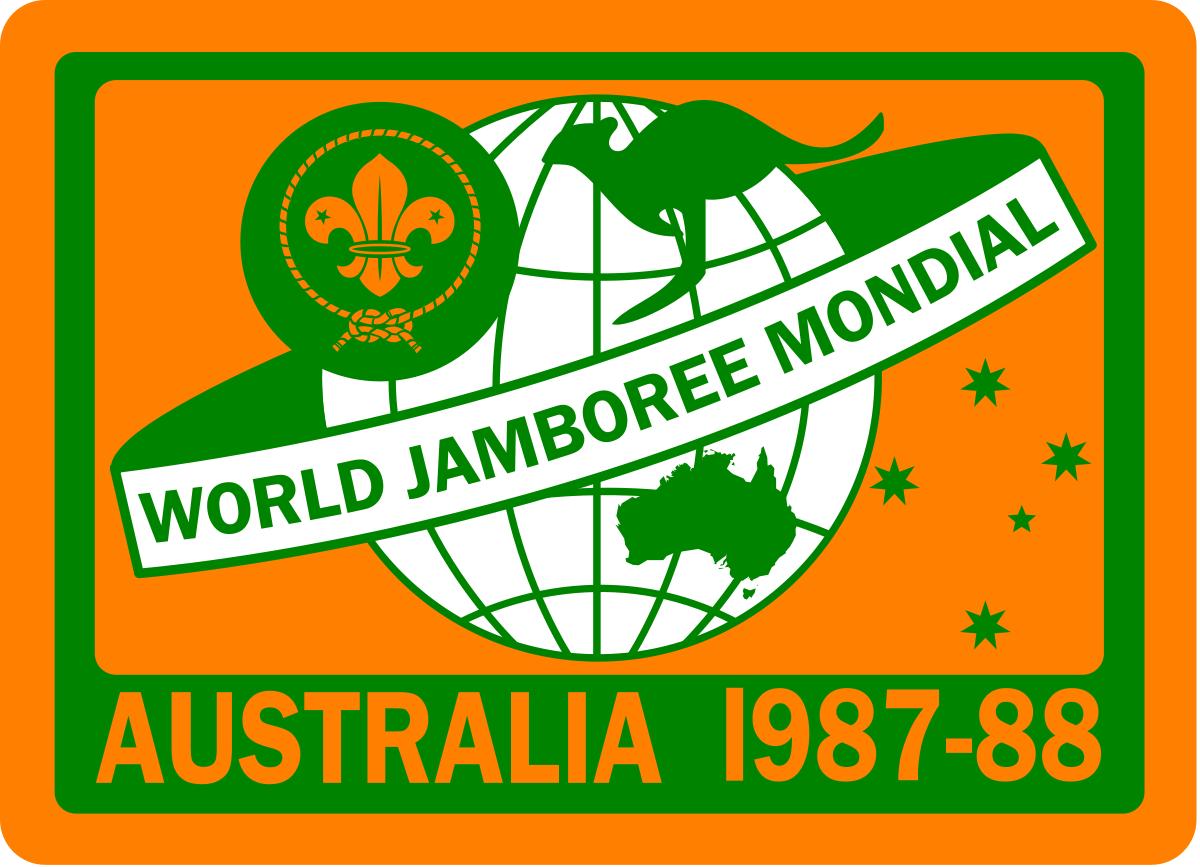
Cataract Scout Park History
Cataract Scout Park was given to the Scout Association of Australia N.S.W. Branch by The Government of New South Wales in 1978. The Minister for Lands, The Hon. Bill Crabtree Declared 103 Hectares of Wedderburn State Forest to be a reserve for Scouts for a permanent Jamboree site. Additions in 1985 increased the total area to 160 hectares.
This park was developed by a committee appointed by Chief Commissioner Ron Pate O.B.E., (14th October, 1981).
Cataract Scout Park was dedicated to the Youth of Australia by The Hon. Frank Walker, Q.C., M.P., Minister for Youth & Community Services on 11th May 1985
Australian Jamborees Held at Cataract Scout Park
14th Australian Jamboree held in 1984-1985
19th Australian Jamboree held in 2001
22nd Australian Jamboree held in 2010
24th Australian Jamboree to be held here in 2016
World Jamborees Held at Cataract Scout Park
16th World Jamboree held in 1987-1988
Cataract Scout Park is a 160 hectare bush camping area located just 70 km south of Sydney.
The site is divided into 10 sub-camps each with toilets and hot and cold showers. Most of the sub-camps have their own BBQ area and dinning facilities. There is plenty of space for your group to run around, and room for games to be set up in your free time.
NARRABEENS HIGH SCHOOL
Extensive use of glass, combined with modern construction techniques, has given the new Narrabeen Boys' High School a very pleasing but nevertheless functional appearance. Eight single-storey prefabricated aluminium-frame buildings provide accommodation for 1,000 pupils from First -Year to Leaving Certificate standard. The importance of. natural lighting is emphasised in all buildings by the installation of aluminium curtain walls with clear glass, plate glass sections at the ends of the building and rough cast glass highlights in the aluminium roof. A colourful exterior is provided with attractive vitreous enamel panels in greens and reds on the lower portion of the curtain walls. Amenities include sheltered lunch rooms for wet weather, changing rooms with hot and cold showers and covered ways between the buildings. Internally the buildings are permanently divided into classrooms, with some folding partitions for provision for larger room areas. Designed by H. Stossel, the school was erected in 20 weeks by James S. Sampson, a subsidiary of Hawksley Australia Pty. Ltd. The glazing was carried out by Bromley Simpson and Co. Pty. Ltd. NARRABEEN'S HIGH SCHOOL (
1959, June 10).
The Cumberland Argus (Parramatta, NSW : 1950 - 1962), p. 11. Retrieved from
http://nla.gov.au/nla.news-article131616238
Narrabeen High School - 1959 - Image courtesy NSW Dept. Of Education.
NARRABEEN SITE FOR SCHOOL
The Warringah Shire Council and the Education Department are to negotiate about a High school site at Narrabeen.
The president of the council, Councillor Batho, said last night that diversion of opinion between the Manly Council and Warringah Shire about a site had delayed the building of a High school. The proposed site at Narrabeen was ideal, he said. However, districts having the greatest population should determine the site. NARRABEEN SITE FOR SCHOOL (
1947, August 6).
The Sydney Morning Herald (NSW : 1842 - 1954), p. 4. Retrieved from
http://nla.gov.au/nla.news-article18047991
Sydney, 2nd March, 1976.
ESTABLISHMENT OF HIGH SCHOOL
PURSUANT to section 34 of the Public Instruction Act of 1880, it is notified for general information that approval has been granted for the establishment of a High School at Pittwater Road, Narrabeen, to be known as Narrabeen High School.
NEIL PICKARD, Minister for Education.
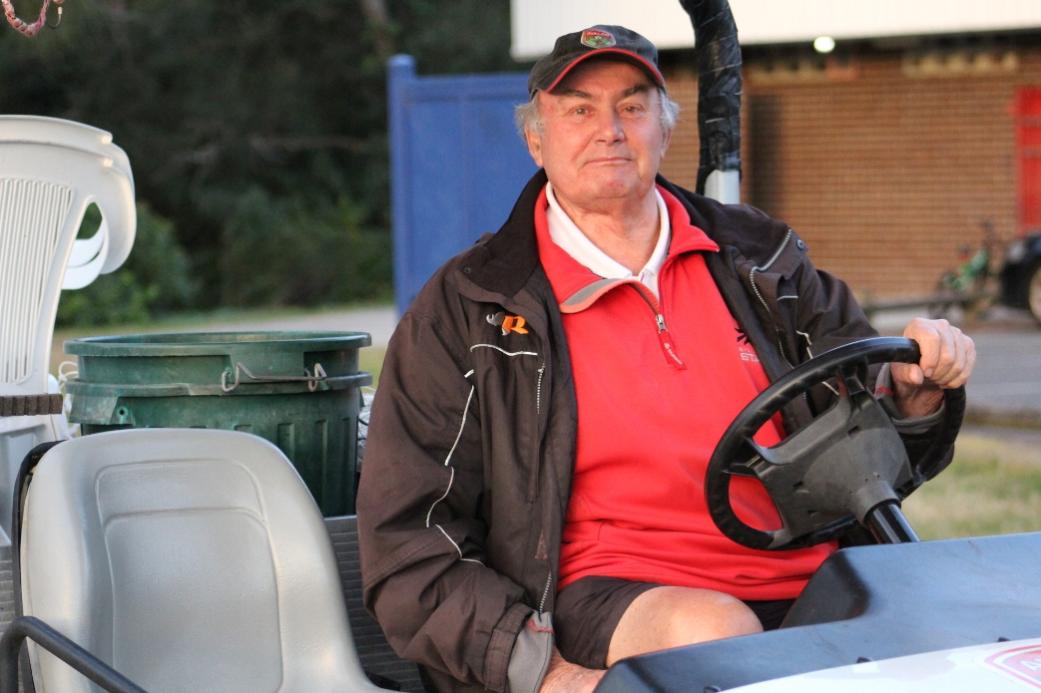
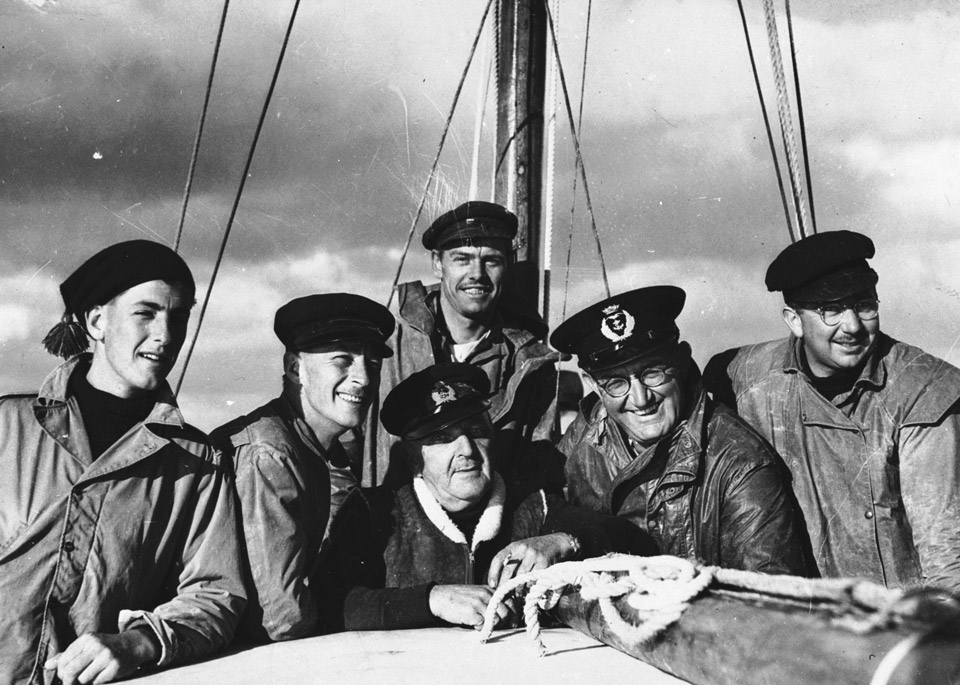
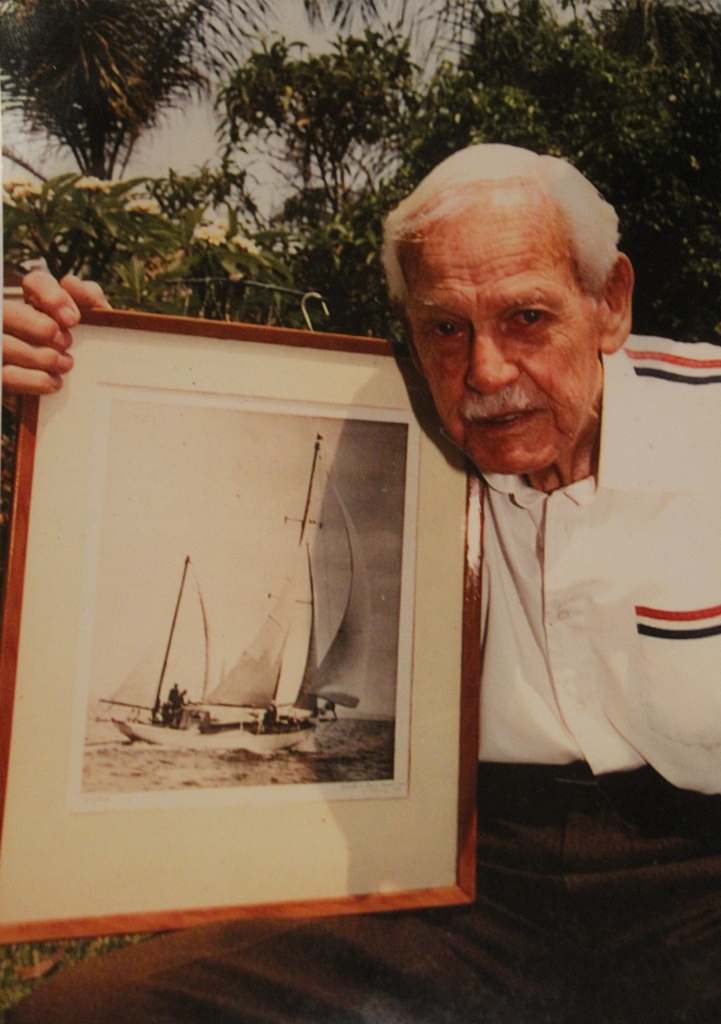

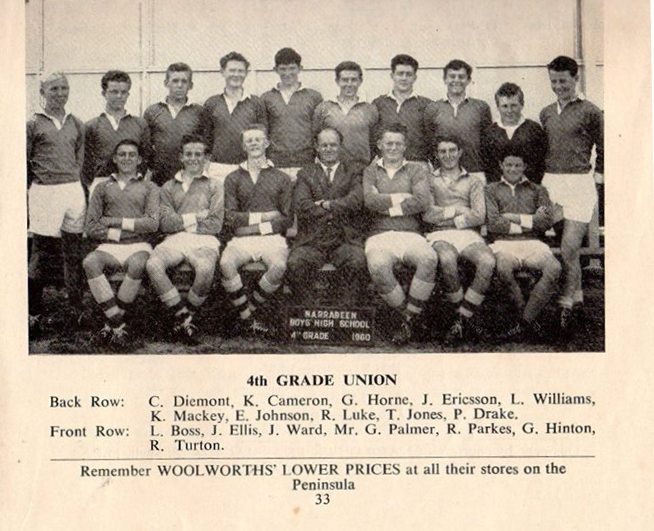
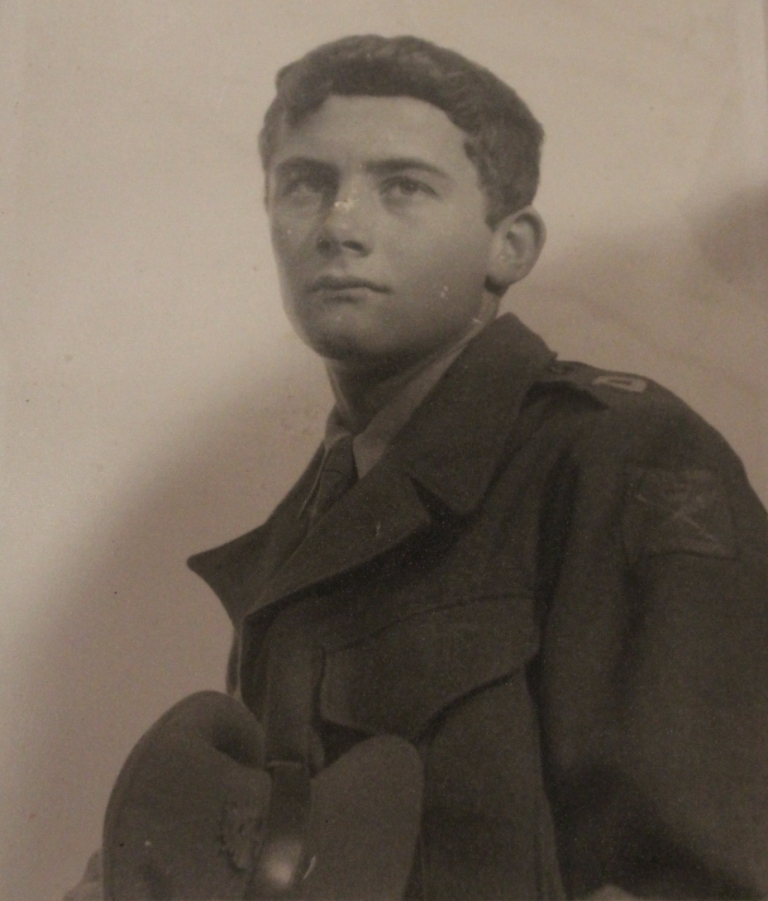
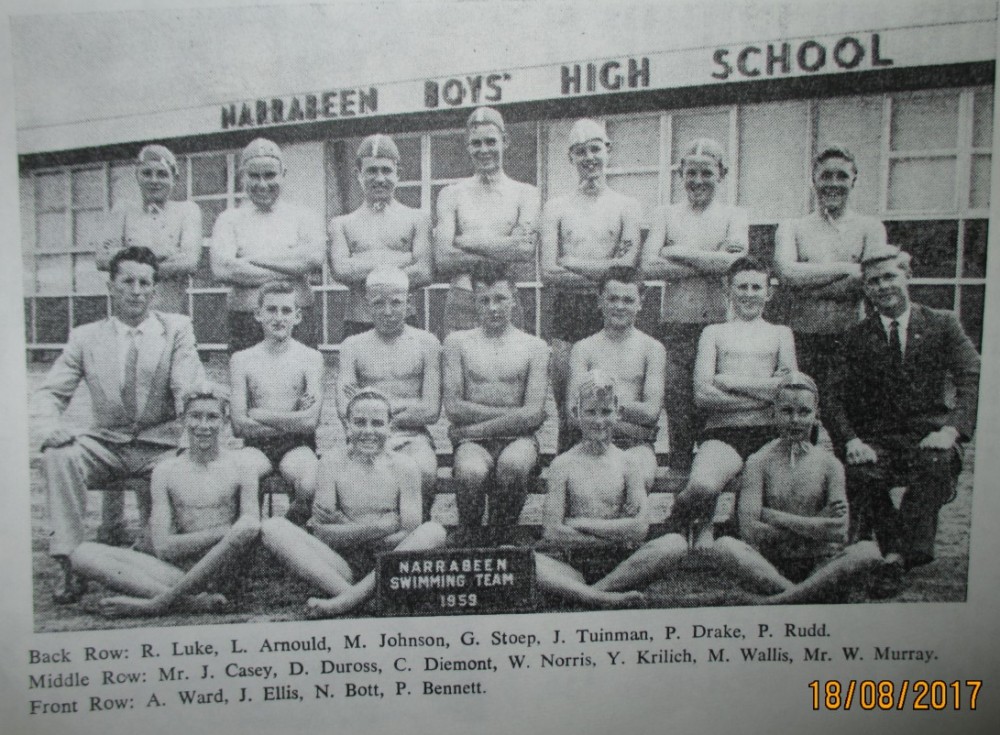
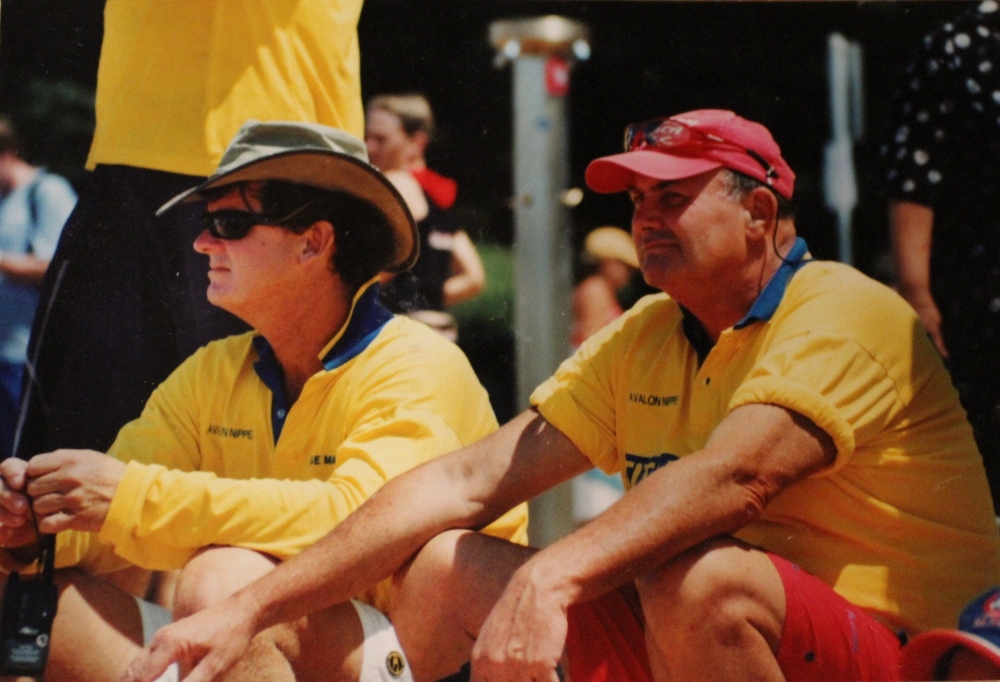
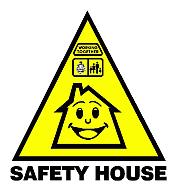 I was also a founding member of the local Safety House Program which covered all the way from Bilgola to Palm Beach. We held the initial meetings in Avalon Primary school when my kids were going there. We went around and put little yellow symbols on everybody’s letterbox after they were vetted and then of course made sure the same people were still living there regularly too.
I was also a founding member of the local Safety House Program which covered all the way from Bilgola to Palm Beach. We held the initial meetings in Avalon Primary school when my kids were going there. We went around and put little yellow symbols on everybody’s letterbox after they were vetted and then of course made sure the same people were still living there regularly too.
